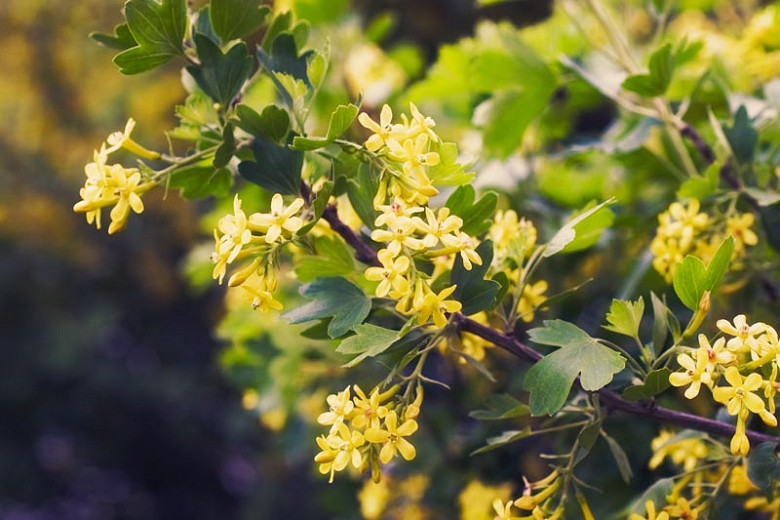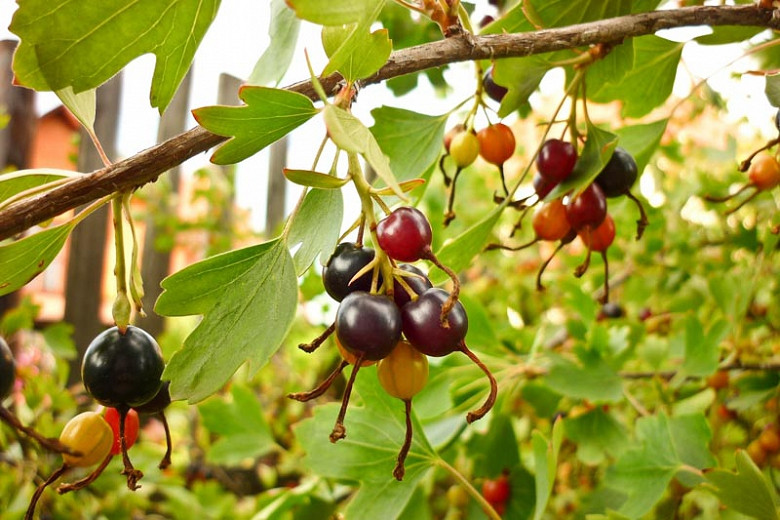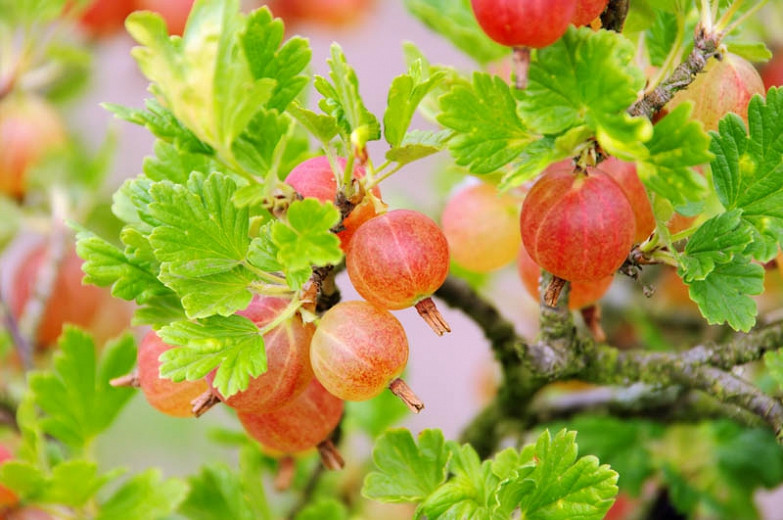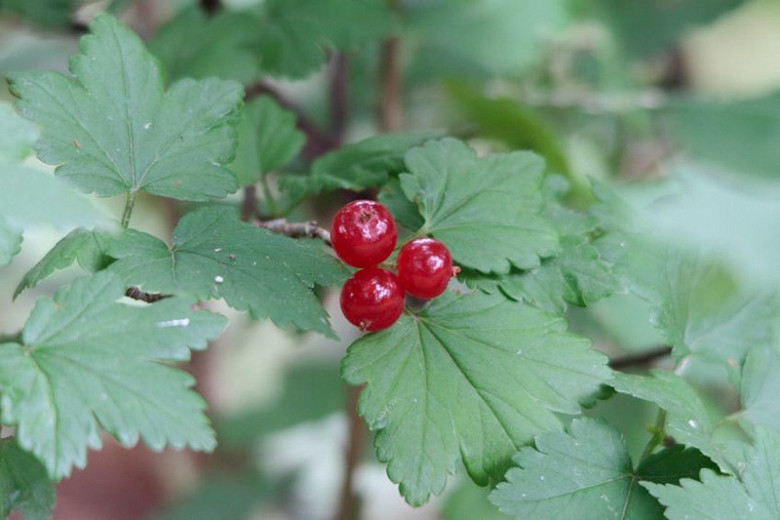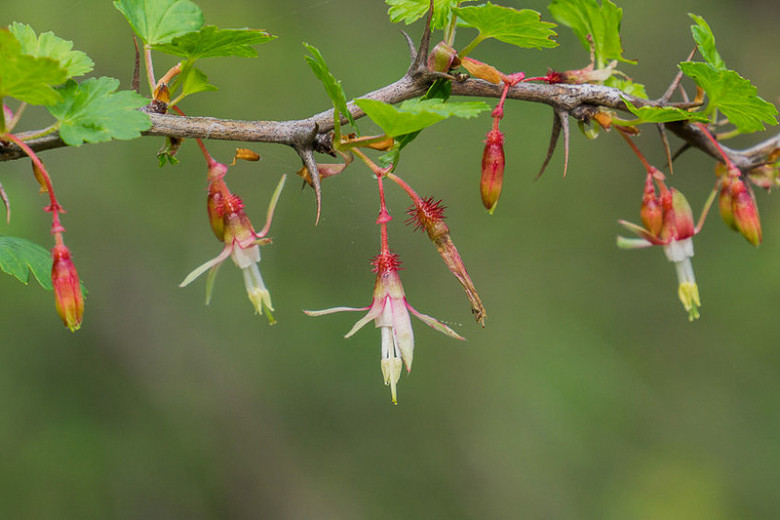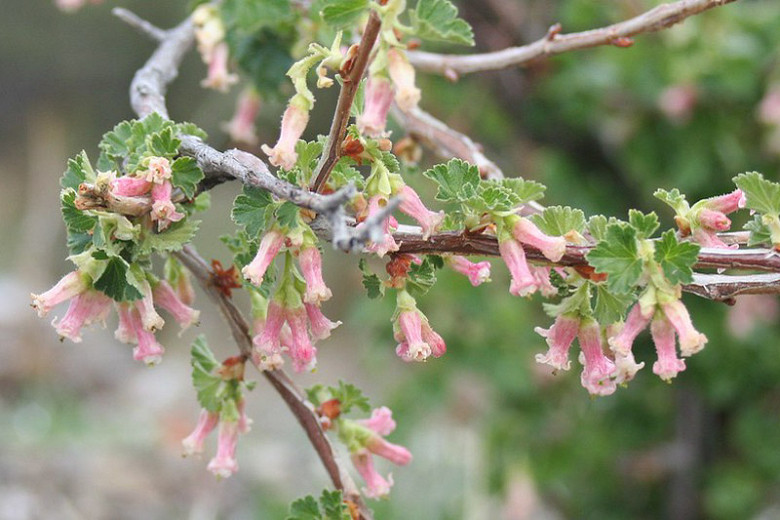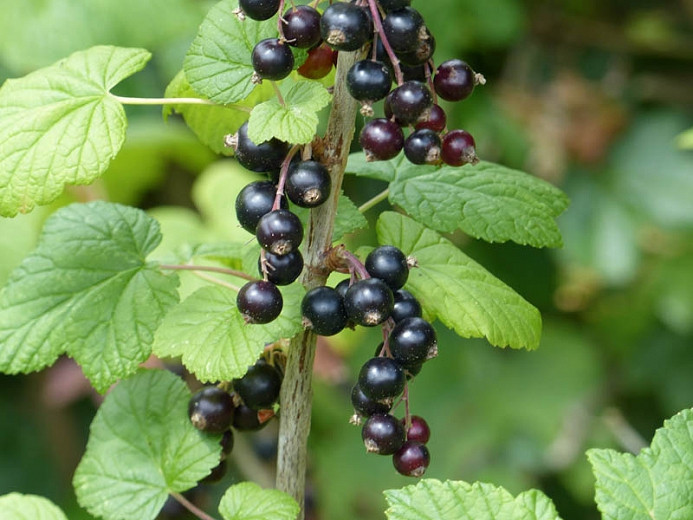Ribes aureum (Clove Currant)
Noted for its fragrant flowers, edible fruits and summer foliage, Ribes aureum (Clove Currant) provides great ornamental value over a long season of interest. An excellent choice for early spring color, this deciduous shrub produces abundant, strongly clove-scented, trumpet-shaped golden yellow flowers on its upright but arching branches. They are followed by drooping clusters of large, edible, shiny black currants in summer.
Noted for its fragrant flowers, edible fruits and summer foliage, Ribes aureum (Clove Currant) provides great ornamental value over a long season of interest. An excellent choice for early spring color, this deciduous shrub produces abundant, strongly clove-scented, trumpet-shaped golden yellow flowers on its upright but arching branches. They are followed by drooping clusters of large, edible, shiny black currants in summer. Tasty, the fruits can be eaten fresh from the shrub or used to make juices, jams, jellies, tarts and pies. The attractive foliage of ovate, 3-5 lobed, bluish-green leaves turns yellow in fall.
- Somewhat loose and open, this flowering shrub grows with a rounded to irregular shape, up to 6-8 ft. tall and wide (180-240 cm). It may spread by root suckers to form clumps if the suckers are not removed.
- A full sun to part shade lover, this plant is easily grown in organically rich, fertile, medium moisture, well-drained soils. Prefers full sun but appreciates some shade in hot summer areas. Best flower and berry production occurs in full sun. Tolerates drought and a wide range of soils ranging from dry to seasonally flooded soils, poor soils, clay soils. Consistent moisture is highly welcomed.
- Drought tolerant once established, this plant is also clay soil tolerant. Attracting scores of butterflies and birds, it is however ignored by rabbits and deer.
- Winner of the GreatPlants award, which is a joint effort between the Nebraska Nursery, Landscape Association and the Nebraska Statewide Arboretum. The goal of this award is to identify superior ornamental landscape plants that meet the challenging growing conditions of the region.
- Low maintenance, this plant may be affected by aphids, leaf spot, powdery mildews, honey fungus and coral spot. Ribes is a host for pine blister rust and, because of this, there is a ban on them in 15 states.
- Perfect in shrub borders, woodland gardens, informal hedges or screens, wildlife gardens and near patios.
- Prune in late winter to early spring if required. Remove damaged branches to rejuvenate and encourage more prolific fruiting.
- Propagate by cuttings or seed.
- Native to Minnesota and South Dakota south to Missouri, Arkansas, Oklahoma and Texas
Requirements
| Hardiness | 4 – 8 |
|---|---|
| Heat Zones | 3 – 8 |
| Climate Zones | 1A, 1B, 2A, 2B, 3A, 3B, 4, 5, 6, 7, 8, 9, 10, 14, 15, 16, 17, A2, A3 |
| Plant Type | Fruit, Shrubs |
| Plant Family | Ribes – Currants |
| Exposure | Full Sun, Partial Sun |
| Season of Interest | Spring (Mid,Late)Summer (Mid,Late)Fall |
| Height | 6' – 8' (180cm – 240cm) |
| Spread | 6' – 8' (180cm – 240cm) |
| Spacing | 72″ – 96″ (180cm – 240cm) |
| Water Needs | Low, Average |
| Maintenance | Low |
| Soil Type | Chalk, Clay, Loam, Sand |
| Soil pH | Acid, Alkaline, Neutral |
| Soil Drainage | Moist but Well-Drained, Well-Drained |
| Characteristics | Fragrant, Plant of Merit, Showy, Fruit & Berries |
| Native Plants | United States, California, Midwest, Illinois, Indiana, Iowa, Kansas, Michigan, Minnesota, Missouri, Nebraska, North Dakota, Ohio, South Dakota, Wisconsin, Northeast, Connecticut, Massachusetts, Maryland, New York, Pennsylvania, Vermont, Pacific Northwest, Idaho, Oregon, Washington, Rocky Mountains, Colorado, Montana, Utah, Wyoming, Southeast, Arkansas, Tennessee, Southwest, Nevada, Arizona, New Mexico, Oklahoma, Texas |
| Tolerance | Clay Soil, Deer, Drought, Rabbit, Dry Soil |
| Attracts | Birds, Butterflies |
| Garden Uses | Beds and Borders |
| Garden Styles | Informal and Cottage, Prairie and Meadow |
